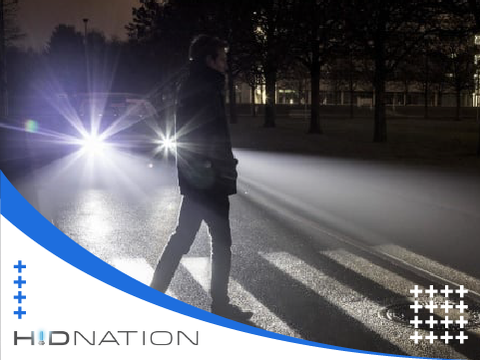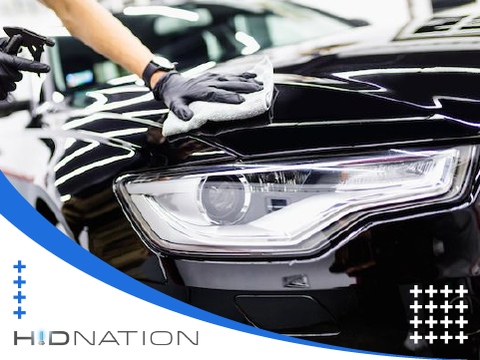Whether you're a night-time driver, live in rural areas with minimal roadway lighting, or simply prefer a brighter bulb, many options are available for your car. HID or LED headlights are popular upgrades and a great way to modernize your vehicle.
HID bulbs use a chamber filled with xenon gas, which is charged by high-voltage electrodes to produce light. They are similar to traditional halogen bulbs but up to three times brighter.
Brightness – Cover Greater Distance
HID lights are more expensive than halogen ones but are up to three times brighter, making them ideal for navigating dark, twisty roads. They also emit a broader, more defined beam to cover a greater distance.
LEDs are more efficient than HID bulbs, meaning that less of the power they draw is wasted as heat. This makes them the preferred choice for drivers who want to reduce their car’s energy consumption. They can also reach full brightness instantly, which is a significant advantage over the few seconds it takes for HID bulbs to warm up.

Some manufacturers sell drop-in LED kits for vehicles that originally came with HID headlights, which make the swap a simple, plug-and-play process. It’s essential to use compatibility checkers before purchasing, though, as some HID retrofit kits aren’t designed to work in your vehicle’s halogen headlight housing and may produce a poor-quality beam pattern.
If you drive on the highway often, a pair of HID headlights will give you the range and visibility you need to stay safe. But if you’re an urban driver who doesn’t often drive at night, a set of LED Headlight Bulbs is more affordable. It will still provide plenty of light for your commute.
Efficiency and Effectiveness
HID and LED lights are significantly brighter than the old halogen bulbs installed in most vehicles. They also have a much greater range in terms of effective distance. It could be essential for those who spend a lot of time driving at night.
A car's light is created through the chemical reaction between a unique mixture of gases and metals within the headlight bulb. On the other hand, LEDs produce light through the interaction of negatively charged electrons with a semiconductor. LEDs are compact and energy efficient.

In addition to being more compact and energy efficient, LEDs can produce instant light when turned on. However, LEDs can cause heat in the assemblies and wiring harnesses surrounding them, so they often require a fan to cool them.
One of the biggest problems with LED headlights is that they damage a vehicle’s electronics. The damage will occur if it isn’t designed to handle the voltage and frequency required by an LED. As a result, it’s critical to ensure that a reputable source makes any aftermarket LED headlights. A certified professional must properly install these lights. You can choose HID Nation if you want professionals.
While aftermarket HID and LED kits are available for most vehicles, finding a quality kit compatible with your vehicle’s headlight housing is crucial. Using the wrong type of headlight bulb can result in a misaligned lens or even damage the headlight housing.
These kits typically include a ballast that regulates the voltage and frequency of the headlight. This will help ensure the bulb works correctly and reaches its full brightness potential.
Require Less Maintenance Cost
For decades, the halogen headlight went unchallenged as the world’s most popular light source. However, recent years have seen some new options challenge the status quo. One such option is the LED headlight. While these lights are more expensive than halogens, they require less maintenance and have better longevity than traditional bulbs.
The main drawback to LED headlights is that these lights create light heat during operation. As a result, they require a cooling system to prevent the bulb from overheating. This can be a problem in colder environments, which may cause the headlights to fog or even turn off.

Another potential issue is that LEDs cannot be used with halogen reflector housings. They use diodes to create the desired beam within the existing reflector bowl. At the same time, halogens utilize a halogen lamp that directs the light in a single direction. Fortunately, some kits make it possible to convert reflector headlights to LEDs.
Despite these issues, LEDs still provide a high-quality light beam that is sufficient for most driving situations. They also consume significantly less energy than halogens, reducing the load on your car’s battery and alternator.
Safety – Reduce the Risk of Damage and Failure
HID lights are an excellent choice for those who spend a lot of time driving after dark. They produce more light, last longer, and are more energy efficient than halogen bulbs. However, the bright light they emit can cause brightness for other drivers on the road. It is perilous when you need to pass another vehicle quickly.
LED headlights are a great alternative to HID lights. They use a process called electroluminescence, which is when negative electrons run into holes in a semiconductor to produce light. This allows the LED to be much smaller than a conventional bulb, which makes it easy for automakers to incorporate them into different designs.
Aside from being small, LEDs also offer focused rays that can be shaped in various ways. Additionally, LEDs don’t have any moving parts, which can reduce the risk of damage or failure.
Conclusion
Whether you choose HID or LED headlights, both significantly improve your night vision. It ultimately depends on your needs and vehicle type that which type of headlight you want to choose. Whatever you choose, be sure to have them installed with the help of a professional mechanic to ensure they work correctly.
Read Also: What is the difference between LED and HID Headlights - Which is Best for Your Car?
FAQs
Should I Use HID Or LED Headlights?
If you’re considering upgrading your car’s headlights to something more potent than standard halogen bulbs, two options come to mind. However, both options require a special conversion kit as they don’t fit into standard halogen housings.
While LED lights cost more upfront, they’ll save you money over the long run in maintenance costs. Additionally, they turn on instantly, whereas HID bulbs need a short warm-up.
Are HID Headlights the Best?
HID (or Xenon) headlights are brighter and more white than standard halogen bulbs. They're also cheaper and easier to find in auto parts stores.
But that doesn't mean they're suitable for everyone. LED lights might be better for you if you're a daytime commuter or stay-at-home parent who avoids driving after dark.
HID Or LED - Which is More Brighter?
HID stands for high-intensity discharge. Sometimes called Xenon lights because of the gas used inside, HIDs have been the go-to for daily drivers looking for brighter headlights in projector-style headlight assemblies.
LEDs are a relatively new technology found in high-end luxury vehicles. They're compact, energy efficient, and provide instant light when switched on.
What Type of Headlights Are Best?
Currently, most vehicles leave the lot with halogen bulbs. They direct a pool of yellow-hued light to the road, which is often too bright and may glare oncoming drivers.
LED bulbs are stylish, energy-efficient, powerful, long-lasting, and won't create glare to oncoming traffic. However, they can be expensive and are harder to install.



